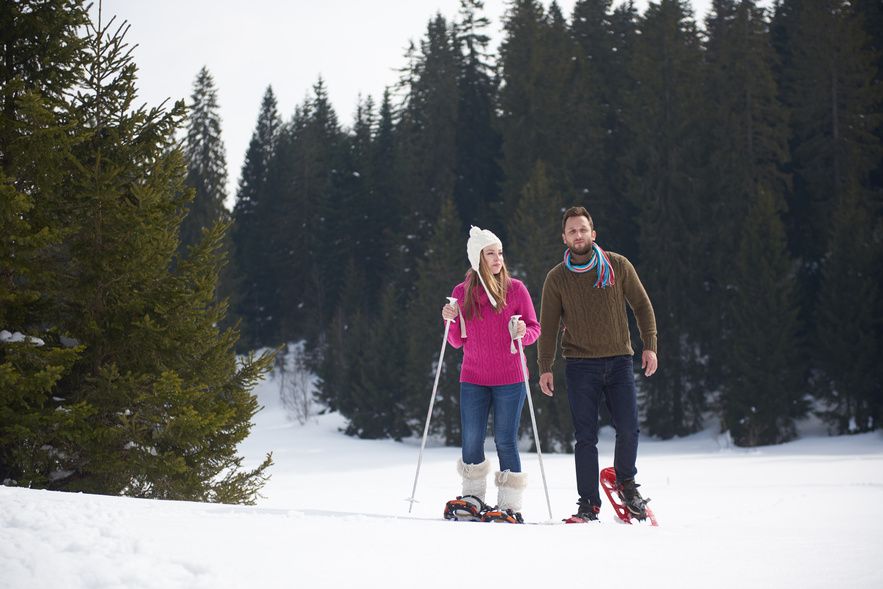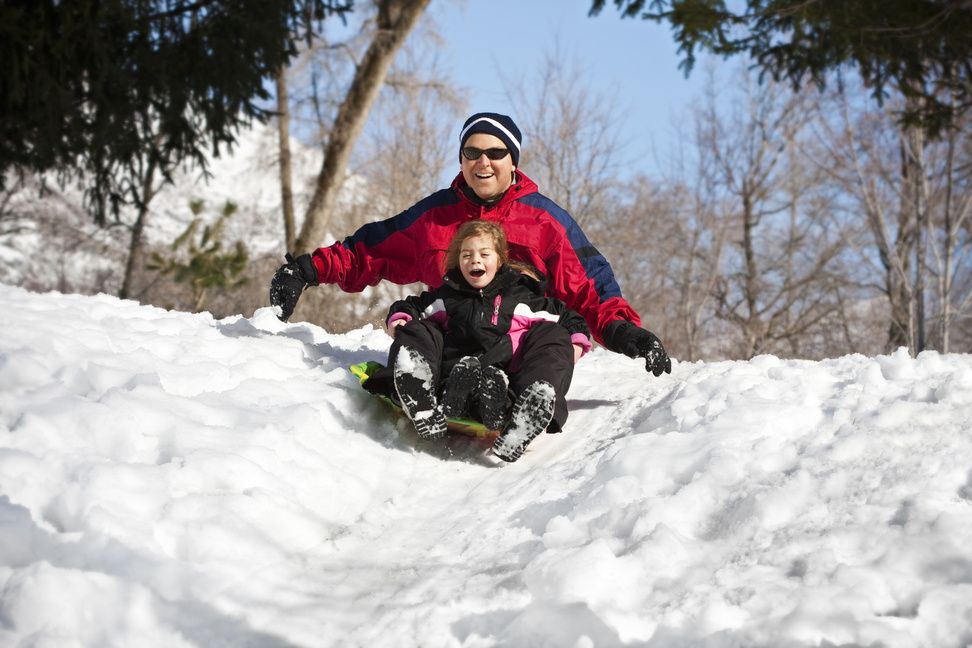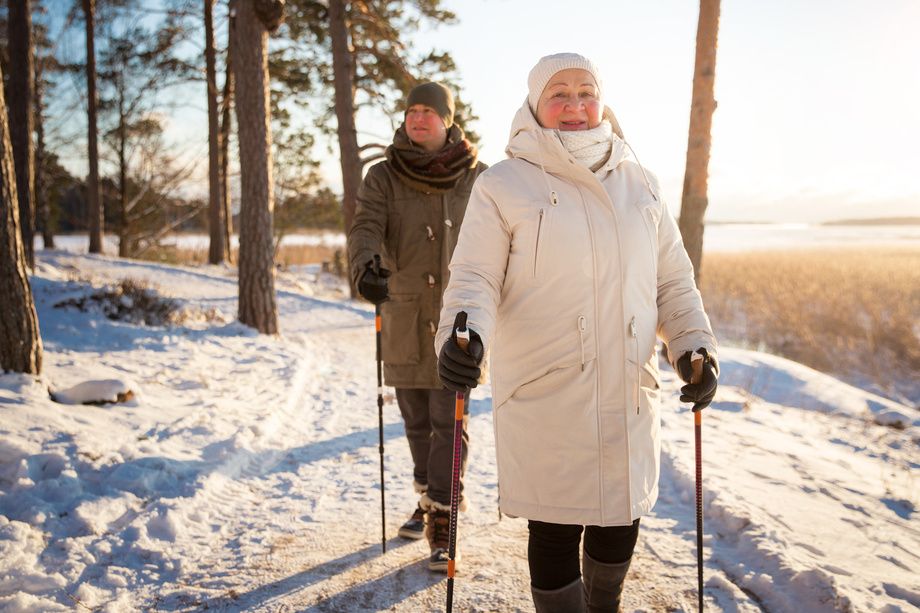With the cold accompanying the changing of seasons, many of us head indoors for warmth. But with this exodus to the cozy sanctuary of our homes, comes the decrease in physical activity levels, and we metamorphosize into semi-permanent fixtures on our couches. Sedentary behavior, though, is associated with many chronic diseases and can be especially debilitating for those with chronic arthritic conditions. So how can one remain active during the winter months, and what are the best winter sports for arthritis? Furthermore, what should be deliberated upon or implemented when engaging in them to ensure safety?
Importance of exercise
Exercise and physical activity of any kind is important to many facets of health and well-being, and should be a normal component of daily life. Engaging in daily physical activity is imperative for maintaining a healthy weight, improving cardiometabolic health, and for preventing or helping to treat existing diseases such as cardiovascular and peripheral artery disease, diabetes, obesity, osteoporosis, dementia and arthritis. Exercise entails various forms or types, including flexibility, strength and aerobics, and all three of these modalities should be incorporated for a complete and comprehensive exercise regime.

In terms of arthritic conditions, maintaining flexibility with daily stretches, helps to improve joint laxity and range of movement and prevents joint contractures from occurring, which reduces pain and inflammation and prevents injury. Simple strength exercises may include calisthenics and weight-bearing movements, or weighted exercises. These routines strengthen and improve the quality of life by improving functional ability, balance and coordination. Strength movements also improve the appearance or tone of the musculature, burns more calories because of the increase in metabolically active muscle tissue accreted through repetition and increased load, and builds muscles that stabilize and protect joints as well as bone tissues.
Finally, aerobic exercise increases your heart and respiratory rate, which in turn, strengthens respiratory muscles, builds lung capacity and improves heart function to promote prolonged longevity. Low impact exercise may be of particular benefit to those who are at the beginning of their fitness journey, and for those with sensitive or inflamed and painful joints, as it excludes impactful, plyometric moves such as jumping. Intensity and impact may increase gradually. However, as ability, experience and fitness improve as long as pain and disability are not experienced.

Apart from maintaining fitness, range of motion and joint mobility, nourishing one’s body with a healthy diet to combat inflammation and following various pharmaceutical and non-pharmaceutical treatment plans are important for allaying symptoms and diminishing joint damage. It may also be advisable to consider incorporating specific supplements such as JointFuel360, to improve and decrease symptoms. JointFuel360 is sold worldwide and contains a specialized blend of components that help rebuild joint tissues such as collagen type 2 fibers and hyaluronic acid. It also contains antioxidants which combat inflammatory damage in the joint capsules, including Boswellia serrata, resveratrol, and curcumin from turmeric plant extract.
Winter Sports
If being outside on a crisp day after a fresh snowfall is your forte, do not let your arthritis limit you and determine the manner in which you can enjoy life hereafter. There are many activities and winter sports to engage in that will provide mental, emotional and physical benefits, and these pursuits may include:
- Walking
- Hiking
- Running or jogging
- Skiing
- Cross country skiing
- Snow shoeing
- Shoveling
- Skating
- Sledding
Safety first and recommendations for pain-free fun
The coldest season of the year can be a fun time to frolic in the snow and pursue your favorite winter sport, but it can also be rife with potential hazards such as cold, ice, black ice, slippery slush and uneven treads that make slips, trips and falls much more likely. Many injuries or exacerbations of current injuries or sensitive joints may occur if one is not mindful or attentive to themselves and their environments. No one wants to head out on the slope or trail and arrive back with cuts, bruises, dislocations, breaks, strains, sprains or just plain inflamed joints. Take heed of the following tips and suggestions for an entertaining and safe outdoor excursion:
- Consider having a partner with you for camaraderie but also safety and potential assistance. Take a charged cell phone and have your emergency contacts just in case. Inform your loved ones and friends where you are going.
- Check the weather, terrain and conditions prior to heading out.
- Dress appropriately: have a moisture-wicking inner layer, insulating middle layer and a weather and water-repellent exterior. You want to be able to move well but be kept warm and dry.
- Proper footwear: This may include high waterproof boots or hikers with good traction and perhaps metal cleats.
- Warm up and cool down: Perform a sequence of dynamic stretches and simple exercises, gaining in intensity and depth of stretch as the routine goes on to prevent injury, and to warm up the joints, muscles and heart. After having completed your activity, conduct a few minutes of cool down to safely lower the heart rate, and stretch the limbs and muscles you just worked.
- If the weather is too foul or dangerous, consider an alternative activity indoors.
- Take water with you and stay hydrated.
- Know your limitations: Don’t push yourself beyond your current abilities. If your joints hurt, stop and head back inside. Maybe reconsider that big hill and go for the bunny hill instead, working your way up. Start slow.
- Wear protective gear, depending on the activity, such as helmets, knee pads and snow pants to soften the blow if you do suffer a fall.
- Avoid rough terrain with large rocks to avoid trips.
- Keep your excursions to the daylight hours and consider exercising in the afternoon as this is the time when many arthritis sufferers report feeling the least pain.
We all have our own specific health concerns and limitations imposed on us at some point in life, but that is no reason to completely avoid activities and hobbies that we derive joy and benefit from. Physical activity and winter sports can be a fun way to pass the time, enable us to socialize with others, benefit our health and reduce pain and disability associated with arthritis. So put on your toque and go enjoy the bounty of the season!
References
Ahmed, A. (n.d.). Winter tips for seniors with arthritis. Arthritis Society. Retrieved February 18, 2022, from https://arthritis.ca/living-well/2021/winter-tips-for-seniors-with-arthritis
Avoid winter sports injuries. Bone & Joint. (2021, August 16). Retrieved February 18, 2022, from https://bonejoint.net/blog/avoid-winter-sports-injuries/
Cleveland Clinic. (2015, May 11). 4 tips to help you ski or snowboard with arthritis. Cleveland Clinic. Retrieved February 18, 2022, from https://health.clevelandclinic.org/4-tips-to-ski-or-snowboard-with-arthritis/
Ezerioha, M. (2020). Ra treatment: What is the safest treatment for rheumatoid arthritis. RheumatoidArthritis.org. Retrieved February 18, 2022, from https://www.rheumatoidarthritis.org/treatment/
Winter activities that can cause pain and how to prevent it. Southern Chiropractic. (n.d.). Retrieved February 18, 2022, from https://southernchiropractic.com.au/winter-activities-that-can-cause-pain-and-how-to-prevent-it/

